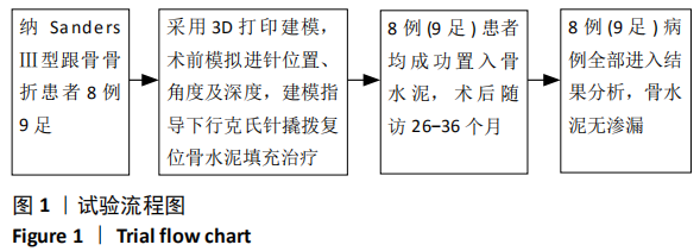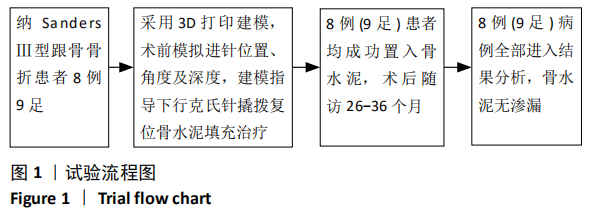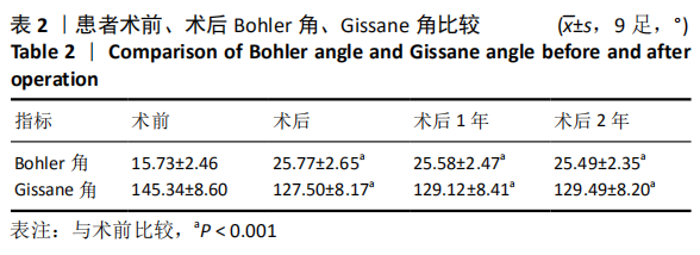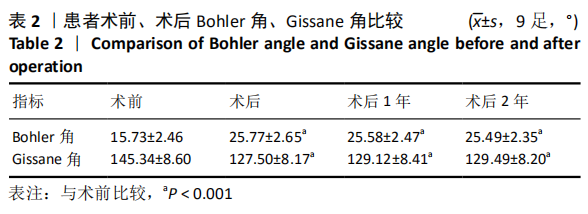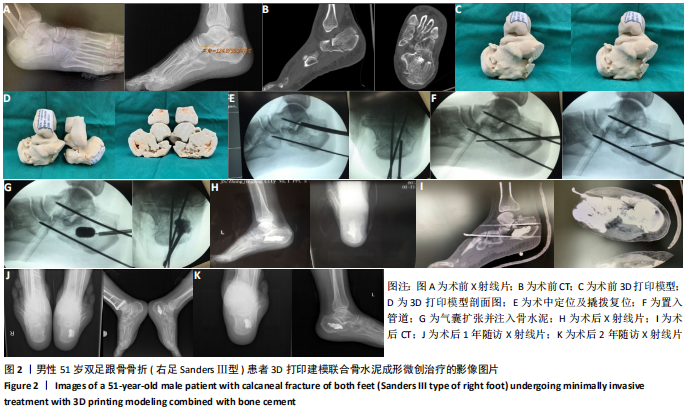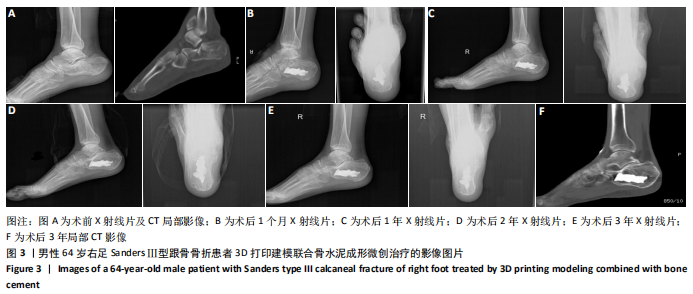[1] 熊雁,王子明.跟骨骨折的临床治疗进展[J].创伤外科杂志,2020, 22(4):241-244.
[2] SOOHOO NF, FARNG E, KRENEK L, et al. Complication rates following operative treatment of calcaneus fractures. Foot Ankle Surg. 2011; 17(4):233-238.
[3] 伍凯,林健,黄建华,等.扩大 L 型切口治疗闭合性跟骨骨折伤口并发症的相关因素分析[J].上海交通大学学报(医学版),2014,34(7): 1043-1048.
[4] 曾德妙,楚明,蒋俊.跟骨骨折微创手术治疗策略[J].创伤外科杂志, 2020,22(4):318-320.
[5] 马超,王成伟,唐国柱.微创技术与开放手术治疗SandersⅡ、Ⅲ型跟骨骨折的疗效比较[J].中华骨科杂志,2020,40(21):1443-1452.
[6] 王小超,王强,沈影超.跟骨骨折的微创手术治疗进展[J].局解手术学杂志,2019,28(2):164-168.
[7] 侯正轩,李建波,刘宁波,等.跗骨窦联合外侧小切口治疗SandersIII型跟骨骨折[J]. 实用骨科杂志,2018,18(1):25-30.
[8] 李伯州,胡牧,徐向阳,等.跗骨窦入路治疗SandersIII型跟骨关节内骨折[J].中华创伤骨科杂志,2014,16(12):1043-1048.
[9] AL-MUDHAFFAR M, PRASAD CV, MOFIDI A. Wound complications fol-Iowing operative fixation of calcaneal fracture. Injury. 2000;31:461-464.
[10] 杨志武,曾宪辉,廖章渝,等.跟骨骨折的微创治疗进展[J].江西中医药大学学报,2019,31(2):121-124.
[11] 刘亮,周恩瑜,陈宇.经皮撬拨复位空心螺钉内固定SandersⅡ、Ⅲ型跟骨骨折[J].局解手术学杂志,2018,27(8):581-585.
[12] WALLIN KJ, COZZETTO D, RUSSELL L, et al. Evidence-based rationale for percutaneous fixation technique of displaced intra-articular calcaneal fractures: a systematic review of clinical outcomes. J Foot Akle Surg. 2014;53(6):740-743.
[13] 张晓东.闭合撬拨复位和切开复位内固定治疗 Sanders II、III型跟 骨骨折的临床效果比照观察[J].中国医药指南,2016,14(25): 137 -138.
[14] JASCQUOT F, LETELLIER T, ATCHABABIAN A, et al. Balloon reduction and cement fixation in calcaneal articular fractures:a five-year experience. Int Orthop. 2013;37(5):905-910.
[15] GAMAL O, SHAMS A. A Protocol for Percutaneous Transarticular Fixation of Sanders Type II and III Calcaneal Fractures With or Without an Added Mini-Open Approach. J Foot Ankle Surg. 2016;55(6):1202-1209.
[16] 蒋协远,王大伟.骨科临床疗效评价标准[M].北京:人民卫生出版社,2005.
[17] 舒文,王栋栋,陈凯,等.经皮球囊扩张复位结合硫酸钙植骨治疗跟骨骨折的研究[J].生物骨科材料与临床研究,2016,13(1):46-48.
[18] MUIJS SPJ, NIEUWENHUIJSE MJ, VAN ERKEL AR, et al. Percutaneous vertebroplasty forthe treatment of osteoporotic vertebral compression fractures evaluation after 36 months. J Bone Joint Surg Br. 2009;91(3): 379-384.
[19] 吴四军,刘正,姚洪春,等.应用高黏度骨水泥PVP治疗骨质疏松性椎体压缩骨折与传统PKP的临床疗效比较[J].中华骨科杂志, 2017,37(2):74-79.
[20] 孙攀登,崔国峰,房亚峰,等.3D打印辅助经皮椎体成形术治疗老年重度骨质疏松性椎体压缩骨折的效果[J].河南医学研究,2020, 29(13):2343-2345.
[21] 罗强,刘德荣,方欣硕,等.3D打印技术在矫形外科的应用[J].中国修复重建外科杂志,2014(3):268-271.
[22] 钟华,陈劲,李建炜,等. 3D打印辅助Sanders CT分型个性化手术治疗跟骨关节内骨折[J].中国骨科临床与基础研究杂志,2017,9(1): 29-35.
[23] 夏铁男,商冠宁.3D打印技术在骨科应用现状的研究进展[J].中华实用诊断与治疗杂志,2020,34(7):742-744.
[24] 孟振,吴亮,孙晓亮,等.螺旋CT三维重建测量国人跟骨数据的临床意义[J].中国组织工程研究,2014,18(20):3207-3211.
[25] 纪荣喜.3D打印技术在复杂跟骨骨折手术治疗中的临床应用研究[J].中国基层医药,2019,26(19):2314-2318.
[26] KLINE AJ, ANDERSON RB, DAVIS WH, et al. Minimally invasive technique versus an extensile lateral approach for intra-articular calcaneal fractures. Foot Ankle Int. 2013;34(6):773‐780.
[27] 苗旭东.微创技术治疗跟骨骨折进展[J].中国骨伤,2018,31(7): 591-593.
[28] KIM D, LIM JY, SHIM KW, et al. Sacral Reconstruction with a 3D-Printed Implant after Hemisaerectomy in a Patient with Sacral Os-teosarcoma: 1-Year Follow-Up Result. Yonsei Med J. 2017;58(2):453-457.
[29] 谭嘉,陈国平,郝永强,等.生物3D打印的关键技术及骨科应用进展[J].中华骨科杂志,2020,40(2):110.118.
[30] 沈杰,姜雪峰,黄国伟,等.跗骨窦入路微创钢板内固定治疗SandersⅡ、Ⅲ型跟骨骨折[J].中国微创外科杂志,2020,26(6): 540-544.
|
